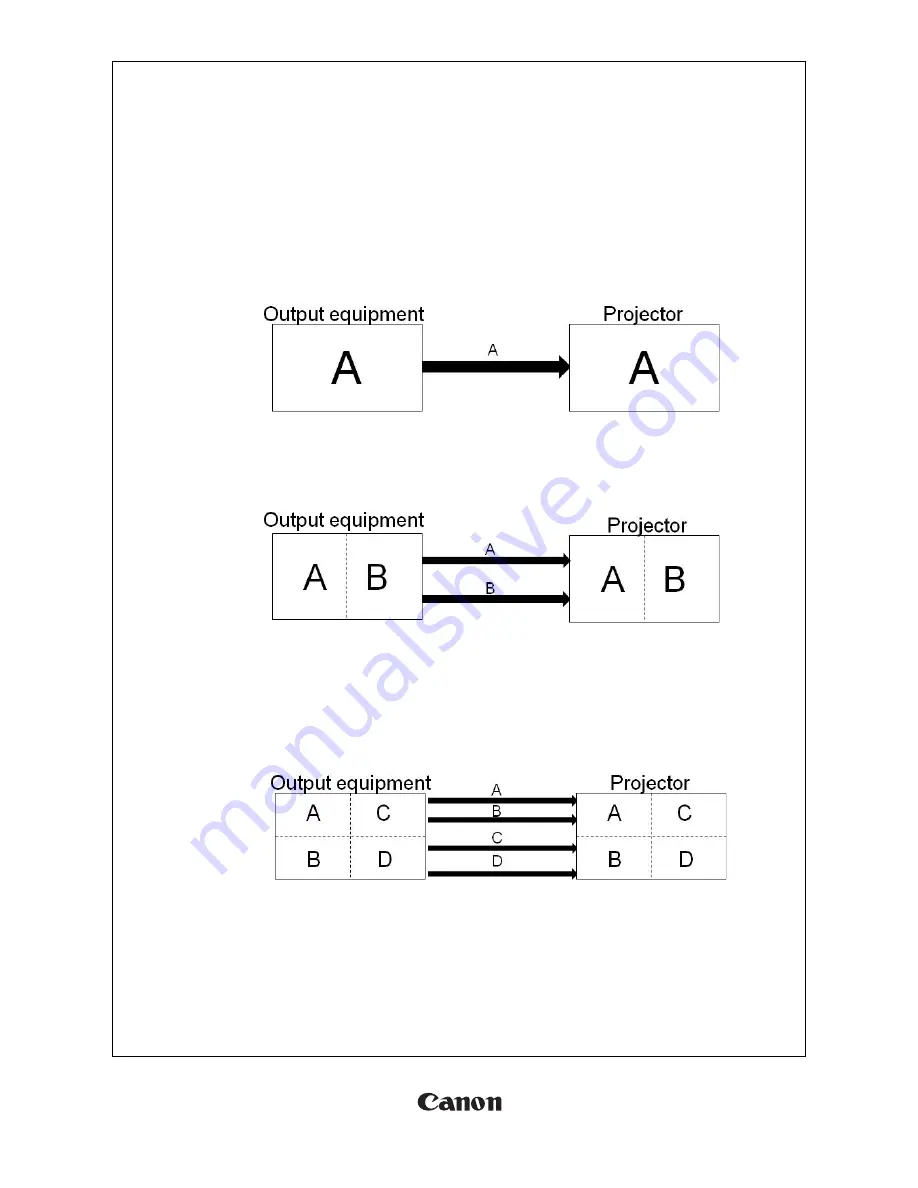
(7/22)
3. Image signals
3-1 Number of terminals used for image input
This product is equipped with a system that transmits image signals through several transmission cables to
display high resolution image signals that could not be transmitted previously with a single transmission
cable (DVI, HDMI).
The different combinations of image input terminals that the product uses are shown below.
①
Single terminal input (DVI1, DVI2, DVI3, DVI4, HDMI1, HDMI2)
The conventional method of transmitting image signals using a single transmission cable.
The screen of the output equipment is played back as is.
②
Two terminal input (DVI1+DVI3, HDMI1+HDMI2)
A method of transmitting image signals using two transmission cables.
For example, when transmitting a 3840x2160 image, each cable carries a 1920x2160 signal.
Image signals are divided into two signals, transmitted, composed, and played back.
For DVI, signal A is received through DVI1 and signal B through DVI3.
For HDMI, signal A is received through HDMI1 and signal B through HDMI2.
③
Four terminal input, quadrant (DVI 2x2)
One of the methods of transmitting image signals using four transmission cables.
For example, when transmitting a 3840x2160 image, each cable carries a 1920x1080 signal.
Image signals are divided into quadrants, transmitted, composed, and played back.
Signal A is received through DVI1, signal B through DVI2, signal C through DVI3, and signal D through
DVI4.








































